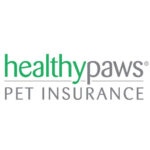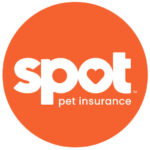Best Pet Insurance For Rhodesian Ridgebacks In 2025
In my judgment, Healthy Paws is the best pet insurance option for those with Rhodesian Ridgebacks.
We’ve saved shoppers an average of $350 per year on their pet insurance.
It’s startling to know that 80% of pet owners aren’t financially ready to cover a sudden $500 vet bill. This is where pet insurance steps in, providing essential financial relief.
In this overview, we’ll go through the best pet insurance providers for Rhodesian Ridgebacks, helping you find the plan that suits your needs. Like health insurance for humans, pet insurance offers better treatment options and lowers your costs.
Best Pet Insurance Companies For Rhodesian Ridgebacks, 2025
Several pet insurance providers specializing in Rhodesian Ridgebacks have similar goals of maintaining your pet's health and easing financial concerns, yet they differ in their approaches. What works for one pet may not be suitable for another. Here's a look at the top pet insurance companies for Rhodesian Ridgebacks:



Compare The Best Pet Insurance Companies For Rhodesian Ridgebacks
Our evaluation of the best pet insurance options for Rhodesian Ridgebacks covered earlier indicates that numerous reputable companies are vying for the top positions. Each company also has its own distinct strengths. Here's a quick overview to give you a sneak peek into each insurer.
| Overall Rating | Best For | Waiting Period | Reimbursement % | Benefit Limit | Get A Quote | |
|---|---|---|---|---|---|---|
| Healthy Paws |
|
Overall |
15 days accident/illness |
70%, 80%, 90% |
Unlimited annual and lifetime |
Instant Quote |
| Lemonade |
|
Cheap |
2 days accident, 14 days illness |
70%, 80%,90% |
$5,000 to $100,000 annually |
Instant Quote |
| Many Pets |
|
Puppies |
15 days accident/illness |
70% or 80% (Most States) |
Unlimited annual and lifetime |
Instant Quote |
| Pumpkin |
|
Older Dogs |
14 days accident/illness |
90% |
$10,000 , $20,000 or unlimited |
Instant Quote |
| Spot |
|
Multiple Pets |
14 days accident/illness |
70%, 80%, 90% |
$2,500 to unlimited |
Instant Quote |
Our Methodology
Our assessments and resulting ratings were shaped by reviewing insurer websites, analyzing customer reviews, consulting other review platforms, and using personal experiences with pet insurance.
Quotes Analyzed
Years Of Industry Experience
Brands Reviewed
Research Hours
Detailed Reviews Of The Best Rhodesian Ridgeback Insurance Companies
Best Overall
Key Statistics
Why We Like Them
⇅Healthy Paws stands out as the best pet insurance provider by offering no claim payout ceilings, per-incident caps, or restrictions. Although it may cost a bit more, the benefit is in removing the need for difficult decisions caused by policy limits. The policy is straightforward with no pricey add-ons, and it lets you choose any licensed vet. Claims can be easily filed through their mobile app or website, with most settled in two days.
Benefits & Drawbacks
⇅- Infinite annual and lifetime reimbursements.
- Quick turnaround on most claims within two days.
- You can request a refund within 30 days
- Opportunity for direct financial transactions with veterinary providers. ✓
- Lack of regular healthcare insurance option ✘
Runner-Up For Best Overall
Key Statistics
Why We Like Them
⇅Lemonade is the most affordable pet insurance choice for Rhodesian Ridgebacks, with coverage limits that are on par with other companies but don’t match Healthy Paws’ unlimited coverage. Lemonade provides coverage from $5,000 to $100,000 annually, with premiums increasing based on the coverage amount. Their standard policy covers accidents and illnesses like cancer, heart disease, skin problems, fractures, and hip dysplasia, a common issue for older Rhodesian Ridgebacks. However, preexisting conditions, dental care, behavioral issues, and elective treatments are not included.
Benefits & Drawbacks
⇅- Opt for a wellness plan that's readily accessible.
- Experience a two-day waiting period following an accident to start benefiting.
- Save on pet insurance with a 10% discount when you include it in your Lemonade home, renters, or car insurance plan. ✓
- Lack of continuous pet telehealth assistance.
- There's an added expense for vet examination coverage.
- I regret to inform you that the policy does not include prescription food or microchipping. ✘
Best For Puppies
Key Statistics
Why We Like Them
⇅ManyPets offers excellent puppy coverage. Pre-existing conditions don’t affect the rates, and healed conditions may become eligible after 18 months. Unrelated conditions remain covered as well. Rhodesian Ridgeback puppies, like other young dogs, are prone to illnesses like poisoning, foreign object ingestion, and accidents. Insuring them early reduces the chance of future exclusions for pre-existing conditions.
Benefits & Drawbacks
⇅- Accessible in a significant number of states, over 40 in total.
- Allows for choosing wellness plans.
- Includes charges for vet examinations for both illness and accident-related reasons. ✓
- Pet owners do not have access to a 24/7 telehealth resource.
- Pet behavioral therapy falls outside of coverage.
- Unfortunately, alternative treatments aren't included in the plan. ✘
Best For Older Dogs
Key Statistics
Why We Like Them
⇅Aging Rhodesian Ridgebacks are at risk for genetic conditions like cruciate ligament issues and hip dysplasia, which require costly treatment. Pumpkin covers these conditions right away and also covers vet exam fees for senior Rhodesian Ridgebacks. Their coverage includes surgeries, dental care, and other common Rhodesian Ridgeback health problems. With three deductible options, Pumpkin generally reimburses up to 90%.
Benefits & Drawbacks
⇅- Decide to sign up for a wellness plan that's offered.
- Enjoy reduced costs for insuring multiple pets with pet insurance.
- Acquire a generous 90% rebate for dogs and cats that are 8 weeks old and above. ✓
- We apologize, but there's no provision for a 24/7 pet telehealth service.
- There's no accident-only plan available among the options provided, sorry. ✘
Best For Multiple Pets
Key Statistics
Why We Like Them
⇅Many Rhodesian Ridgeback owners have multiple pets due to the breed’s social personality. Spot offers a 10% discount for insuring more than one pet, helping you save big. Their preventive care plan includes routine services like vet visits, fecal tests, teeth cleanings, and some vaccines. They also offer a 30-day money-back guarantee if the service isn’t satisfactory. Spot reimburses up to 90% of approved vet bills and offers a 24/7 helpline. You’re free to consult any licensed vet or specialist in the U.S.
Benefits & Drawbacks
⇅- Involves microchip tagging solutions.
- Gives the choice of a $100 deductible fee.
- Features a 24/7 hotline for pet health inquiries. ✓
- There's a 14-day waiting period for accidents, in comparison to a 2-day period with certain major competitors. ✘
Average Cost Of Pet Insurance For Rhodesian Ridgebacks
| Company | Deductible | Annual Reimbursement % | Monthly Price | Age Of Dog |
| Healthy Paws | $500 | 70% | $70 | 5 year old |
| Lemonade | $500 | 70% | $40 | 5 year old |
| Spot | $500 | 70% | $73 | 5 year old |
| Healthy Paws | $500 | 80% | $36 | 1 year old |
| Lemonade | $500 | 80% | $20 | 1 year old |
| Spot | $500 | 80% | $53 | 1 year old |
| Healthy Paws | $500 | 70% | $37 | 3 month old |
| Lemonade | $500 | 70% | $29 | 3 month old |
| Spot | $500 | 70% | $83 | 3 month old |
How To Find The Best Pet Insurance Company For You
Different pet insurance companies offer various costs and coverage features, making it tough to choose the right plan. To assist you in finding the best policy for your pet, keep these tips in mind before making your final choice:
Check Whether Your Pet Is Eligible
To enroll young puppies and kittens in insurance, they typically need to be at least 6 to 10 weeks old, depending on the company. Some insurers might not permit initial enrollment for senior pets or may limit them to accident coverage. Once enrolled, most plans offer lifelong coverage as long as premiums are kept up.
Research What’s Covered
Pet insurance usually covers expenses like surgeries, hospital stays, and medications for sick or injured pets. However, some companies may impose additional charges or not cover specific services at all. Here are a few examples:
- Exam fees: If your dog suffers a broken leg, for instance, while some plans may cover X-rays, surgery, and pain medications, they might not pay for the vet’s exam fee.
- Alternative treatments and rehab: Some plans include coverage for alternative therapies such as acupuncture and physical therapy, while others might require additional fees.
- Behavioral therapies: Not all plans cover treatments for behavioral issues, like aggression.
- Prescription food: Certain plans might exclude food or supplements prescribed by a veterinarian for a covered condition.
- Dental care: Pet insurance varies greatly in dental coverage. Some plans may not cover gum disease or dental issues, while others may depend on recent dental cleanings for coverage. Some wellness plans may also cover dental cleanings. Remember, pet insurance typically does not cover pre-existing conditions, cosmetic procedures, or breeding-related costs.
Decide How Much Coverage You Want
Many pet insurance plans come with a cap on how much they will pay out annually, but some do not have this limitation. It’s up to you to select an amount that makes you feel secure about managing veterinary expenses. If your dog or cat is healthy, you may go years without paying more than for regular checkups. However, unexpected surgeries or major health concerns can lead to costs that quickly reach into the thousands.
Understand Reimbursements And Deductibles
In pet insurance, most plans cover a percentage of your veterinary expenses. Typically, you can choose a reimbursement level, such as 70%, 80%, or 90%, when you sign up. However, some plans offer fixed payments for specific treatments, which may be less than what your vet charges, requiring you to cover the additional cost.
Almost all plans include a deductible, which is the amount you must pay out of pocket before your coverage begins. You usually have options for different deductibles, such as $100 or $250. Some plans require a deductible for each condition, while most only require it to be paid once a year.
Generally, if you choose a lower deductible and higher reimbursement, you’ll have higher premiums, while opting for a higher deductible and lower reimbursement will lower your premium payments.
Check Waiting Periods
Insurance plans usually have a short waiting period following purchase, typically around 14 days, before providing full coverage for accidents and illnesses. During this period, treatments are excluded. Longer waiting periods may be enforced for specific conditions such as cruciate ligament injuries, which impact a dog’s knee stability and mobility.
Examine Extra Costs
Some pet insurance firms include coverage for regular services like check-ups and vaccinations. While this might be appealing, it’s essential to assess whether the extra cost is worthwhile. Compare the annual cost of the wellness insurance plan to what you usually pay for these services annually. Be sure to carefully review the specifics, as definitions of “wellness” can vary among different pet insurance providers.
Compare Quotes
Pet insurance costs can differ based on the provider and the type of coverage offered. Certain insurers give discounts for covering multiple pets, which could help cut expenses. However, discounts alone don’t guarantee the ideal plan. To find the best pet insurance, it’s necessary to delve into the specifics and gather quotes from various plans. Be sure to conduct a fair comparison, considering coverage levels, deductibles, and reimbursement limits.
Common Health Issues For Rhodesian Ridgebacks
Genetic health problems are more frequent in purebred Rhodesian Ridgebacks compared to other breeds. This may be due to breeding practices that didn’t fully account for genetic considerations. Below are some of the most common health concerns affecting Rhodesian Ridgebacks:
- Cancer (Oral Melanoma, Mast Cell Tumors)
- Brachycephalic Obstructive Airway Syndrome (BOAS)
- Patellar Luxation
- Hip Dysplasia, Legg-Calvé-Perthes Disease
- Corneal Ulcers, Entropion, Dry Eye
- Skin Fold Dermatitis, Infections
Average Cost Of Typical Vet Procedures
| Typical Vet Procedure | Average Cost Of Procedure |
| Puppy vaccinations | $75-100 |
| Flea & tick prevention | $40-200 |
| Heartworm prevention | $24-120 |
| Spay or neuter surgery | $200-800 |
| Annual exam | $240-600 |
| Teeth cleaning | $200-500 |
| Microchip | $40 |
Average Cost Of Emergency Vet Procedures
| Emergency Pet Procedure | Average Cost Of Procedure |
| General consultation/exam | $100-$150 |
| General bloodwork | $80-200 |
| X-rays | $150-$250 |
| Ultrasound | $300-$600 |
| 1-2 day hospitalization | $600-$1,700 |
| 3-5 day hospitalization | $1,500-$3,500 |
| Wound treatment & repair | $800-$1,500 |
| Emergency surgery | $800-$2,500 |
| Oxygen therapy | $500 |
Is Pet Insurance Worth It For Rhodesian Ridgebacks?
Pet insurance provides a protective shield against unforeseen veterinary expenses. While many pet parents can cover their pet’s medical bills, a considerable number of Americans struggle to handle a $1,500 emergency vet bill. The right pet insurance can offer a financial safety net, allowing you to focus on your pet’s health rather than your financial situation.
The value of pet insurance often hinges on your expectations. If your pet is currently undergoing treatment for a chronic condition and you’re looking for financial help, you might be disappointed since no companies in our evaluation cover pre-existing conditions. However, if you grasp your policy’s coverage scope and align it with your budget, you’re more likely to view it as a good investment.
Factors That Impact Cost Of Your Pet Insurance Policy
The price of pet insurance can vary significantly, much like health insurance, based on specific factors such as:
- Location: Insurers take local veterinary costs into account when determining the price of your policy.
- Pet’s Age: Older pets are often more susceptible to health issues, which can result in increased premiums.
- Pet’s Breed: Certain breeds are more prone to health problems. For example, bulldogs and Boston terriers frequently experience respiratory issues, while larger breeds like Pugs are more likely to develop hip dysplasia. These potential concerns can influence the cost of your pet insurance.
- Deductibles, Coinsurance, and Coverage Limits: The less you’re willing to pay out of pocket for your pet’s care, the higher your insurance premiums will be. For instance, opting for a $100 deductible instead of a $500 one will allow for quicker reimbursements but will also increase your premiums.
FAQs
Is pet insurance cheaper for purebred dogs?
Due to genetic vulnerabilities, purebred dogs typically have more expensive health insurance coverage compared to mixed-breed dogs.
What is the average cost of owning a Rhodesian Ridgeback?
Expenses in the first year add up to around $3,000, encompassing vaccinations, food, grooming, and insurance. However, in the following years, annual costs decrease to about $1,900.
What insurance do you need for a dog?
It’s a good practice for dog owners to have pet insurance to cover veterinary costs and keep their dogs in good health.
Sources
⇅